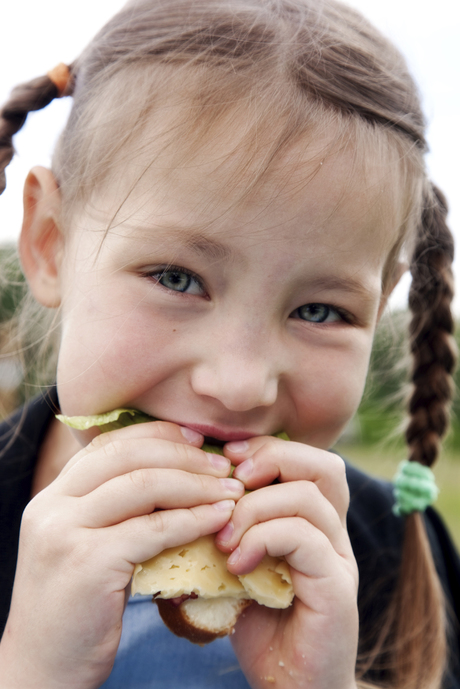Hungry children for lunch

Children’s eating practices are being set for life in the preschool years, so providing meals at this time is a wonderful opportunity to influence good habits and lifelong health. Most states have guidelines, mandatory or recommended, for meals in child care. While guidelines can look quite challenging, they are a great help with portion sizing and in building the framework for a healthy menu.
Meals are generally served by the staff of the centre and they are your customers as well as the children — their impressions of appearance and aroma when the covers are taken off is as important as the children’s views to the ‘success’ of the meal.
Early days
It is suggested that children start solids from around six months, beginning with small portions of pureed or finely mashed single foods. There is no special sequence for introducing foods but centres may have their own preferences. Some centres will ask parents to bring the food for beginning eaters, but otherwise a useful tip is to provide small frozen portions of single food items that staff can use as they need them.
The menu
From around 12 months, children can share family food and can enjoy the children’s menu at child care. Include plenty of the popular and familiar items — pasta, noodles, roast chicken — but also use the opportunity to offer new foods. Australian kids (and their parents) are often not strong on lentils or beans but they are extra healthy (and economical) so try a few on the menu. Fish is healthy and recommended; tuna casserole and patties are popular, but plain fish not so popular.
At child care, children will be hungry and will often eat with relish foods that they refuse to even try at home. Research recommends that the best advice about kids’ eating is to offer the foods you are happy for them to eat, and let them decide whether and how much to eat. This is sometimes called ‘parents provide, child decides’; in this case it is ‘centre provides, child decides’, so plan with this in mind.
Children often love ‘all in one’ dishes and they are easy to serve, but it can be useful to have several parts to the meal so that fussier children can choose at least one item. For example, offer a vegetable or salad along with the main, bread on the side or sauce and pasta served separately. Some littlies are still learning to use cutlery, and finger foods are always very popular so include them often — patties, croquettes, slices and finger-size vegetable pieces.
Tricky stuff
Almost certainly there will be one or more children with special diet needs in every centre and consequences can be serious if there is an error. Go through your menu and work out which items are suitable for which children. Make sure that where allergy is concerned items are prepared separately, served separately and labelled accurately; do not expect busy staff to work out which items to serve. Every service should be able to manage something like ‘gluten-free’ meals but if you believe your service cannot provide accurately for complicated needs, suggest the parents bring the meals from home. Better to do this than make an error.
A highlight in the day
Menus must be displayed for families ahead of time. Parents are delighted and relieved that their children are having a healthy meal during the day; it takes the pressure off the evening mealtime when everyone is tired. Be ready to offer up recipes when parents say ‘he loved it’, or even offer meals for sale at the centre.
Check out: http://www.health.gov.au/internet/main/publishing.nsf/Content/phd-gug-child-cookbook (information and recipes for child care) and http://www.allergy.org.au (accurate allergy information).
Career upskilling: from food to product development chef
Former chef Zach Baudinet decided to take his years of food experience to the next level through...
A taste of flavours on trend in 2024
Understanding the flavours, ingredients and trends that will shape what we consume is essential...
What's new on the shelf this Easter?
Paper artwork-inspired chocolate eggs, sweet chilli products on show and bite-sized Polly Waffles...












